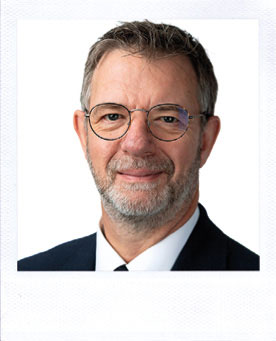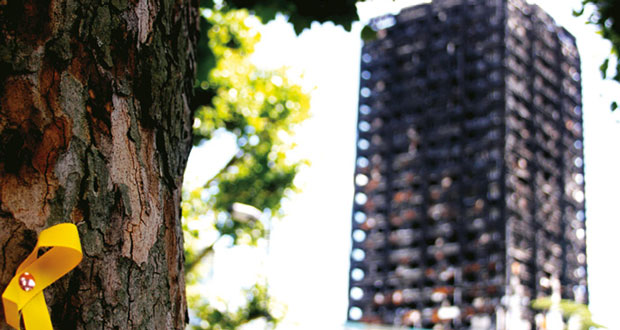 THE WORKPLACE COMPLIANCE CONSULTANT’S VIEW
THE WORKPLACE COMPLIANCE CONSULTANT’S VIEW
GREG DAVIES,
DIRECTOR OF MARKET DEVELOPMENT, ASSURITY CONSULTING
Over recent years, the Fire Safety Act 2021 and Building Safety Act 2022 have seen significant change in how multi-residential buildings must be managed – (buildings containing two or more sets of domestic premises), and high rise multi-residential buildings (HRRB) (buildings containing two or more sets of domestic premises which are 18m/7 storeys high (whichever is reached first)). They have also seen a much greater emphasis placed on the ‘whole of life’ safety provision within new or refurbished buildings falling into scope, at design, construction, and occupation.
While the focus, as a result of the Grenfell Tower fire in 2017, has been on residential properties, there are few who do not see similar requirements improving safety in others sectors too. These changes are not the only ones in place or in the pipeline, other examples are:
- February this year saw the Government appoint Dame Carol Black to lead a new taskforce on Occupational Health in the workplace, with the aim “to tackle in-work sicknesses and help grow the economy”. With only 45 per cent of workers in Britain currently having access to some form of Occupational Health service, the taskforce is looking to produce a voluntary occupational health framework for businesses, which will be due out in the Summer.
- Also, in February the draft Terrorism (Protection of Premises) Bill (also referred to as Martyn’s Law or the Protect Duty) went out to consultation. As a consequence of the tragic Manchester Arena terrorist attack in 2017 Martyn’s Law – named after Martyn Hett who was killed alongside 21 others at the event – the legislation, once enacted, will impose requirements on premises and events in relation to “preparedness for, and protection from, a terrorist attack by requiring them to take proportionate steps, depending on the size and nature of the activities that take place at the premises”. Currently public premises with a 100 capacity or more (standard tier) and then those with a capacity of 800 or more (enhanced tier), will be required to put in place relevant additional measures.
- The Corporate Sustainability Reporting Directive (CSRD), which came into force across the EU on the 5th January 2023, sees greater rules on company reporting of social and environmental information. While we are no longer part of the EU, non-EU companies generating over €150 million on the EU market, will also need to report. The requirements will come into effect for the 2024 financial year for reporting in 2025.
What is also stark about this pipeline of changes is that they all impact workplace and facilities. If not directly, there will be aspects of each that do, and this will once more put a spotlight on our profession. They are also opportunities for us to not just fanfare the problem-solving ability we already have but make FM a real and positive agent for change. Where the legislation may create the business need it is FM that has the ability to provide the solution.
 THE SMOKE AND FIRE EXPERT’S VIEW
THE SMOKE AND FIRE EXPERT’S VIEW
CONOR LOGAN,
TECHNICAL DIRECTOR, COLT INTERNATIONAL
There have certainly been some notable changes in fire safety legislation and regulation in the last few years that building owners and managers need to pay attention to.
With regards to smoke control in buildings, the Smoke Control Association published the SCA & FMA Guide: Smoke Extract Fan Maintenance in 2021, which looks at the maintenance of smoke extract fans – an important safety aspect in buildings that often gets overlooked. This best practice guide can ensure that your life safety equipment is fit for purpose and it is recommended that all service engineers are familiar with its contents.
There are several issues that require special attention from facilities managers and other building managers:
- Testing, service, and bearing check intervals: Following BS 9999, a smoke control system should undergo weekly testing, with a comprehensive system test conducted quarterly. Service intervals are recommended every six months and bearing checks are advised every three months— an increase in frequency compared to previous practices. As well as doing all necessary checks at each test, engineers must also check building records each time they visit to ensure that weekly testing is taking place.
- Smoke extract fans manufactured before 2005: Fans produced before 2005 are unlikely to have undergone testing or certification to the European Standard EN 12101-3. While it’s not a legal requirement to replace them, the guidance recommends replacing these fans with certified products. CIBSE guidance suggests a maximum service life of 30 years for smoke extract fans, emphasising the importance of factors like environmental conditions and usage frequency.
- Smoke extract fans manufactured after 2005: Fans produced after 2005 should be maintained and replaced if they deteriorate beyond acceptable limits or if their service life, according to CIBSE guidance, has expired. The decision to replace rests with the building owner and/or manager, but the service engineer plays a role in presenting evidence and data to inform that decision, considering the potential risks associated with failure in life safety installations.
- Re-wound motors: While common in service and maintenance, re-winding motors for safety-critical components like smoke extract fans is not advisable. Unless re-wound by the original manufacturer or a licensed specialist to the exact specifications, a re-wound motor may not perform as well as the original. High-temperature motors, crucial during fires, should only be replaced with new motors of the same type and performance from the original supplier.
- Use in fire: Smoke extract fans are designed for single high temperature use. Any fan that has been exposed to a fire situation should be replaced, regardless of the results of any post-fire performance tests that have been carried out.
These latest changes in regulation will not be the last and show how important it is that building owners and managers adopt a proactive approach to fire safety to ensure the safety of their tenants, buildings, and stock.





